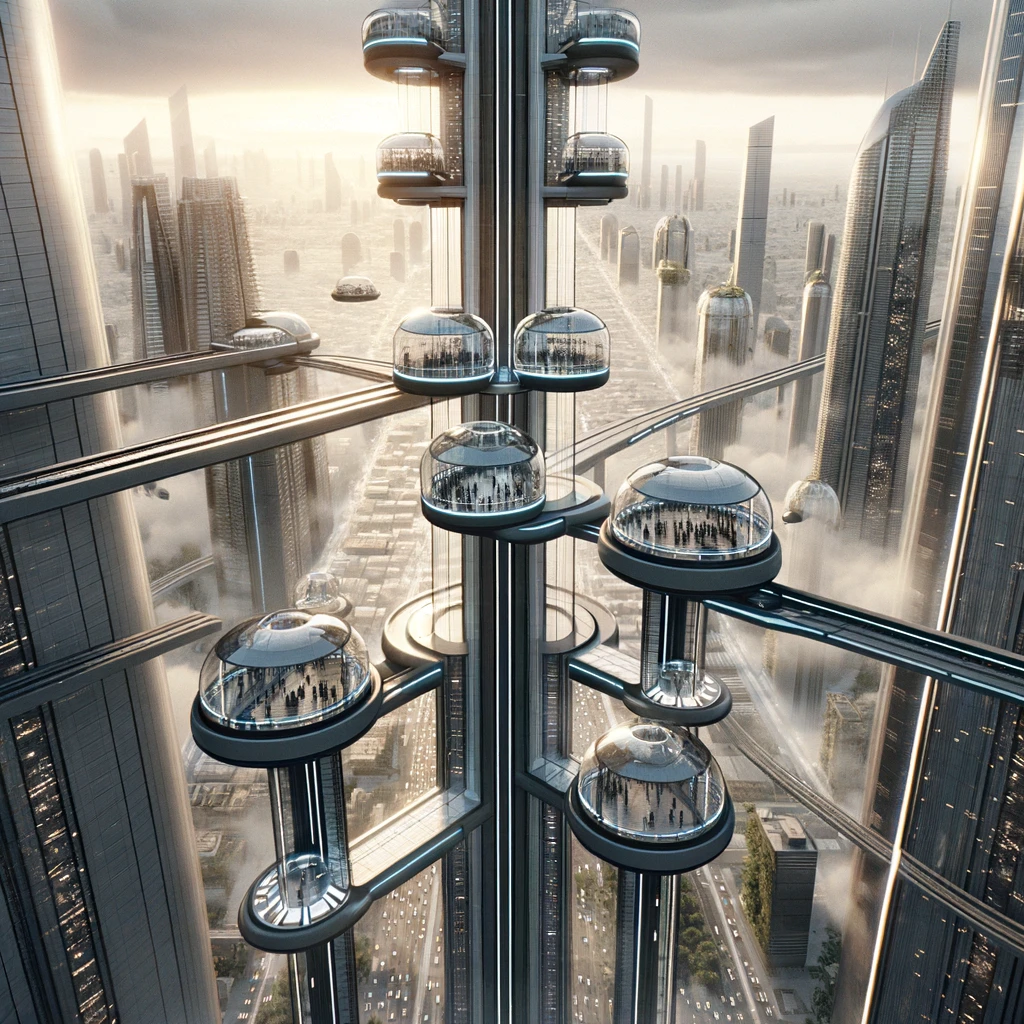In the heart of Saudi Arabia’s desert, an ambitious vision is coming to life: NEOM’s The Line, a 170-kilometer-long linear city that promises to redefine the future of urban living. At the core of this transformation is Artificial Intelligence (AI), a key player in revolutionizing transportation within this mega-project. AI’s integration into The Line’s transport system is not just about enhancing efficiency or reducing carbon footprints; it’s about creating a seamless, innovative, and futuristic urban mobility experience. This blog post explores how AI is set to transform transportation in The Line, offering a glimpse into the future of urban mobility.
AI-Powered Mobility: The Backbone of The Line
The Line’s concept is groundbreaking: a car-free, zero-emissions city designed around its residents’ needs, ensuring everything is within a five-minute walk. But what happens when you need to traverse its vast 170-kilometer stretch? This is where AI steps in, offering a blend of innovative solutions that redefine the essence of city travel.
High-Speed Rail Network
At the heart of The Line’s transport infrastructure is an AI-operated high-speed rail network. This isn’t your average train system; it’s envisioned to be the backbone of The Line, utilizing AI for operational efficiency, safety, and scheduling. The trains, equipped with AI algorithms, can predict maintenance issues before they occur, ensuring an uninterrupted, safe service. Moreover, AI optimization allows for real-time scheduling adjustments based on passenger demand, reducing wait times and avoiding overcrowding.
Autonomous Vehicles
The Line is set to embrace autonomous vehicles (AVs) for its intra-city commutes. These AVs, powered by sophisticated AI, can navigate the city’s unique linear structure with precision, offering on-demand, door-to-door service. Imagine summoning a vehicle through your smartphone, which arrives within minutes, ready to transport you to another module of the city with no human intervention. These vehicles are not just about automation; they’re about integrating into the city’s fabric, communicating with each other and the city’s infrastructure to optimize routes, reduce travel times, and enhance safety.
Vertical Mobility Solutions
In a city that aspires to grow vertically, horizontal transport isn’t the only focus. The Line plans to utilize AI in managing vertical mobility through smart elevators and drones. Smart elevators, equipped with AI, can predict peak times and adjust their operations accordingly, minimizing wait times. Meanwhile, drones offer a glimpse into the future of personal and cargo transport, capable of swiftly navigating the vertical cityscapes, all orchestrated by AI to ensure safety and efficiency.
AI for Sustainable Urban Mobility
Sustainability is at the core of The Line’s vision, and AI plays a pivotal role in achieving this goal. By optimizing routes, whether for public transport or freight delivery, AI significantly reduces energy consumption. Autonomous electric vehicles, seamlessly integrated into the city’s transport network, contribute to The Line’s ambition of a carbon-neutral footprint. AI’s predictive capabilities also extend to managing the city’s energy use, ensuring that the transport network operates at peak efficiency with minimal environmental impact.
Enhancing the Human Experience
Beyond the technical capabilities, AI’s integration into The Line’s transport system is about enhancing the human experience. AI technologies enable personalized travel experiences, from customized in-vehicle environments to predictive travel assistance, suggesting the best times and modes of transport based on an individual’s schedule and preferences. This level of personalization ensures that mobility in The Line isn’t just about getting from point A to B; it’s about doing so in a way that is most convenient, comfortable, and tailored to individual needs.
Future Possibilities: AI’s Evolving Role
As AI technology advances, its potential within The Line’s transport ecosystem continues to expand. Future possibilities include AI’s role in managing a city-wide network of micro-mobility options, such as e-bikes and scooters, integrated with public transport to offer last-mile solutions. Moreover, AI could further contribute to the development of smart infrastructure, where roads and pathways adapt in real-time to traffic conditions, weather, and emergency situations, creating a truly dynamic and responsive urban environment.
Challenges and Considerations
While the potential of AI in transforming transportation within The Line is immense, it does not come without challenges. Data privacy, cybersecurity, and ethical considerations surrounding autonomous vehicles and AI decision-making processes are critical issues that need addressing. Additionally, the success of AI in urban mobility requires not just technological innovation but also public acceptance and trust in these new systems.
Conclusion
The integration of AI into The Line’s transportation system represents a bold leap into the future of urban mobility. By harnessing the power of AI, The Line is set to offer a glimpse into a world where transport is not just efficient and sustainable, but also seamlessly integrated into the fabric of daily life, enhancing the human experience in unprecedented ways. As we stand on the brink of this new era, The Line offers a promising look at how AI can transform

